Arts & Entertainment Community
Day Tripper | Stop and smell the lavender in Sequim
A number of years ago, I had to meet some friends who were returning from a Canadian vacation by way of a ferry into Port Angeles. On our way back to Gig Harbor, we stopped for lunch at what appeared to be a sleepy little town just off Highway 101.
Arts & Entertainment Sponsor
Arts & Entertainment stories are made possible in part by the Gig Harbor Film Festival, a proud sponsor of Gig Harbor Now.
Our meal was great, but as far as I could tell, the only claim to fame for this community was that it had a name more difficult to pronounce than Puyallup. That town was Sequim (pronounced “skwim”). My, how times have changed.
Recently, while killing time in a waiting room, I picked up a magazine with a feature story about lavender and its amazing attributes. I was really surprised to read that many people recognize Sequim as the lavender capital of the United States.
Sequim, in many ways just like Paris
Now that I’d had my eyes opened to this potentially wonderful elixir, it was hard not to notice that lavender is everywhere and seemingly in everything. I also did a little research and discovered that Sequim’s claim to fame is almost certainly true. Our little Sequim is reputed to share claim to the title of Lavender Capital of the World with a city you may have heard of — Paris.
That led me to wonder what else I didn’t know about this little Clallam County community less than half the size of Gig Harbor. As it turns out the answer is a whole lot, which made it an ideal candidate for a day trip.
Getting there
Sequim is 79 miles northwest from Gig Harbor.
Take Highway 16 to Highway 3 North. Stay on Highway 3 until you reach Highway 104; turn left to cross the Hood Canal floating bridge. Once across the bridge, stay on 104 until it merges with Highway 101 North to Sequim.
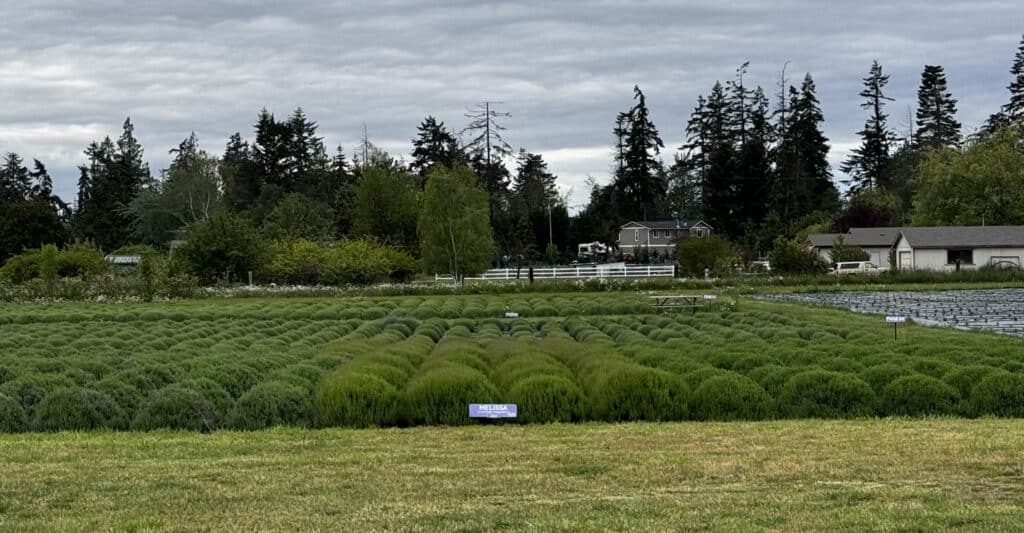
Sequim is considered by many to be one of the lavender capitals of the world … along with Paris. Photo by Mary Williams
I had to wonder how a small town like Sequim, known best 30 years ago as the place to which many retiring Californians migrated to live out their golden years, ended up with the lofty title of Lavender Capital of North America. A 2020 story by Catie Leary on a website called Treehugger explains it comprehensively.
I wasn’t surprised to learn that to accomplish all that they have, the community had to be intentional and focused.
Why lavender?
Lavender is widely reputed to calm, help with sleep issues, boost mood and memory, relieve pain, heal skin wounds, and act as a protective agent. With the increasing acceptance and popularity of aromatherapy and essential oils, the number of products using lavender is increasing dramatically.
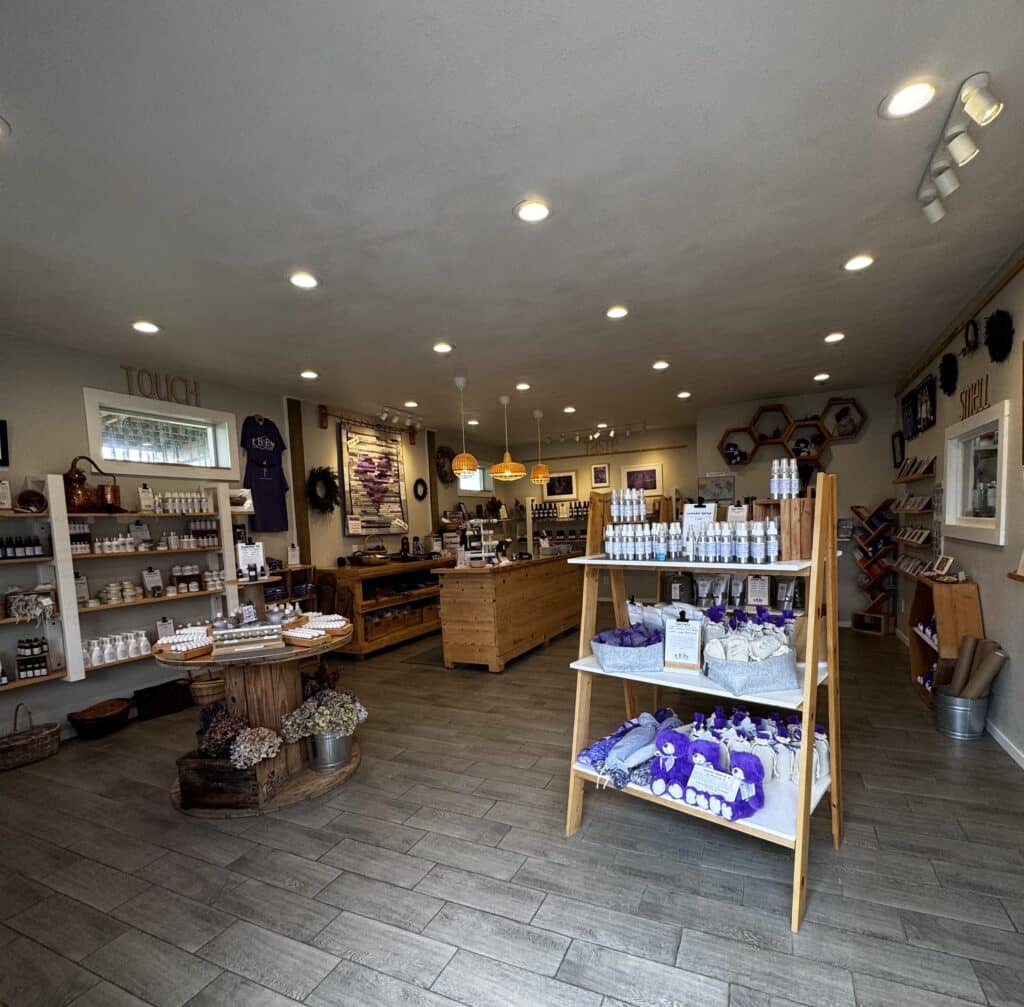
Lavender-related items for sale in a Sequim gift shop. Photo by Mary Williams
The lavender-producing farms in the Sequim area have formed a collective focused on the agritourism aspects of lavender farming. Their efforts include farm tours, educational activities and gift shops. They have also developed the Sequim Lavender Trail, a group of independent farms open to the public. To learn more about the participating farms check out their Lavender Trail Driving and Cycling Guide.
The farms operate year-round but focus on the growing season that runs from June through September. Their primary summer event is the Sequim Lavender Weekend on the third full weekend in July, which this year is July 18 through 21.
I visited B&B Family Farms, for no reason other than it was the first one I found that happened to be open on a Monday in May. From what I could learn, it is typical of all the family farms on the trail. The staff was friendly, parking was easy, and while the lavender fields were still trying to get their mojo on, the air was fragrant with that familiar calming smell.
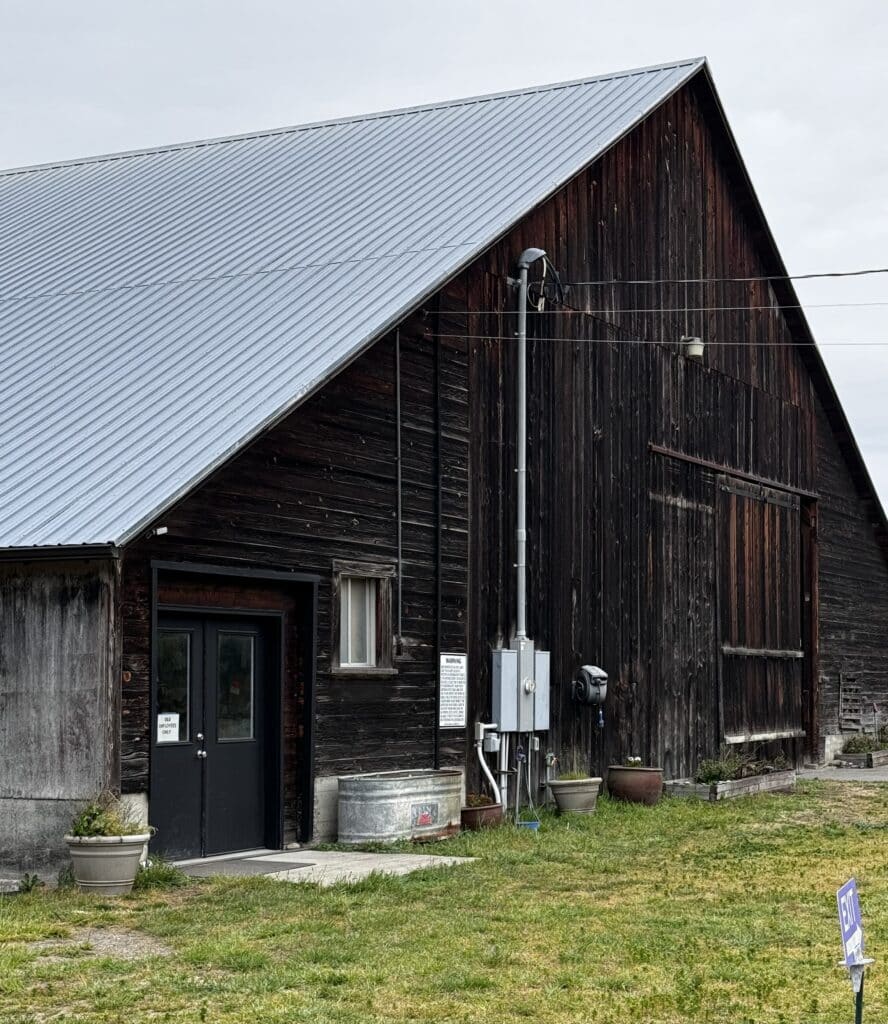
A barn at B&B Family Farm in Sequim. Photo by Mary Williams
The combination of the strong local economy, affordable prices and the relatively mild and dry weather found in Sequim has made it an attractive place to visit and live. Just like other communities that rank high on the livability scale, Sequim has a variety of activities that visitors and residents alike enjoy.
A Jamestown S’Klallam land acknowledgement
One of the first things you’ll see as you approach Sequim is the Tribal Center for the Jamestown S’Klallam Tribe. The Jamestown S’Klallam Tribe is one of three S’Klallam bands: the others are the Lower Elwha Klallam near Port Angeles and the Port Gamble S’Klallam north of Poulsbo.
S’Klallam contact with Europeans began in the 1700s and increased in the 1800s, after the establishment of Hudson’s Bay Company trading posts in the Northwest. The tribe certainly appears to be very active in the community, providing sponsorships for many activities.
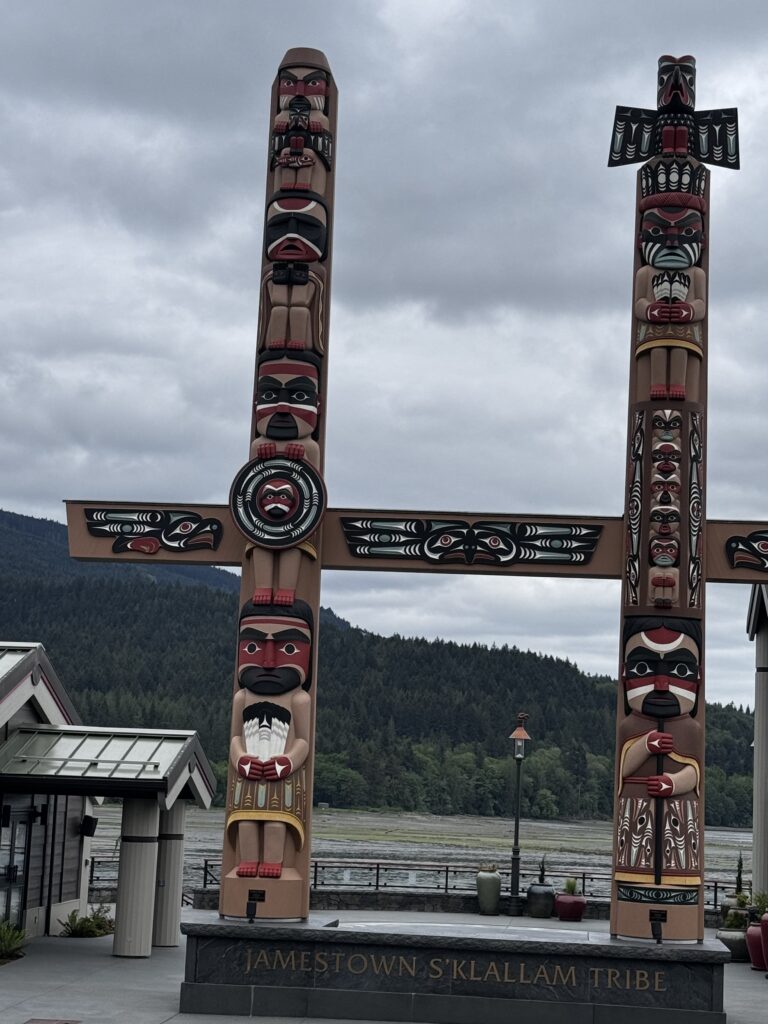
The Jamestown S’Klallam Tribal Center in Sequim. Photo by Mary Williams
S’Klallam means “the strong people”. The band of S’Klallam Indians disbanded into their own individual federally recognized tribes in the early 1900s. The local tribe is named after one of their early leaders, Lord James Balch. According to other tales, the word Sequim in S’Klallam means “a place for going to shoot”, which represents the abundance of game and wildlife of the area.
A century later, after a six-year effort to receive official recognition as a tribe, the United States Department of the Interior granted them this recognition on Feb. 10, 1981
Sequim Museum
Located at 544 N. Sequim Ave., the Sequim Museum is open from 11 a.m. to 4 p.m. Wednesday through Saturday and from 5 to 8 p.m. during the First Friday Art Walk. Admission is free.
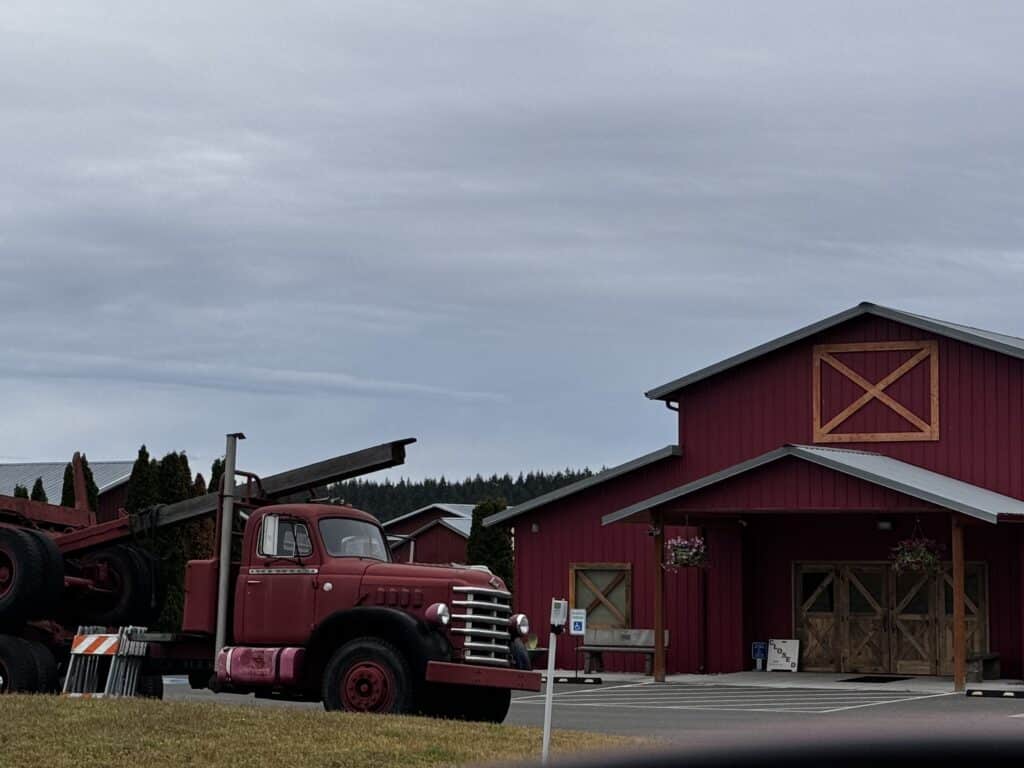
The Sequim Museum. Photo by Mary Williams
The museum, which is operated by an all-volunteer staff, maintains a collection of artifacts, exhibits, and displays chronicling the historical heritage of the Sequim Dungeness area. The 6,000 square foot facility opened in 2019 and has been designated a Blue Star Museum by the National Endowment for the Arts.
One exhibit honors the Boys in The Boat. It features two Western Red Cedar racing skulls built by George Pocock. Joe Rantz, from Sequim, was one of the nine rowers who won gold in the 1936 Olympics.
The museum also owns the Old Dungeness Schoolhouse, which is on the National Register of Historic Places. Built in 1892, the structure features a bell-towered schoolhouse and is one of few examples of this kind of architecture. It is located at 2781 Towne Road, about 5 miles from the center of town.
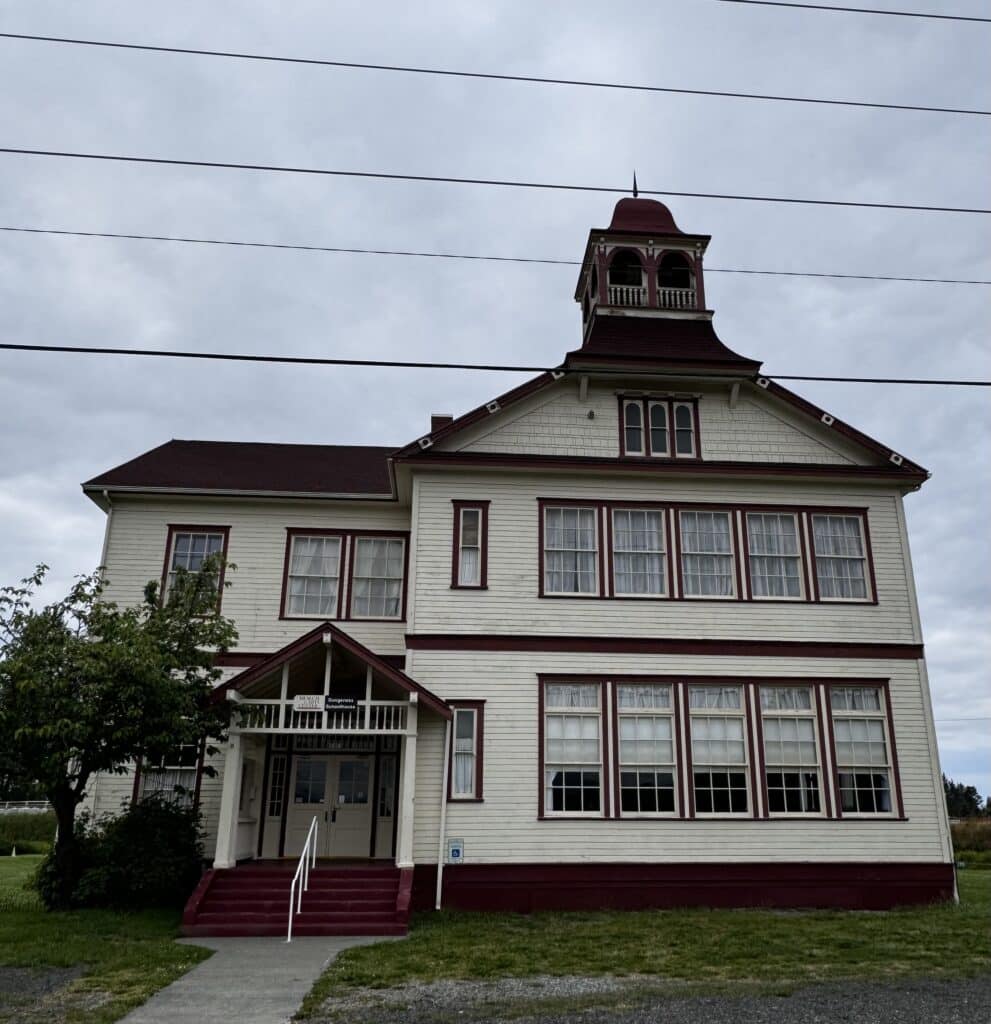
The Old Dungeness Schoolhouse. Photo by Mary Williams
The New Dungeness Spit
A spit is a narrow coastal land formation tied to the coast at one end. They frequently form where the coastline abruptly changes direction, often at the mouth of a harbor. They may be composed of sand and are often complexly curved.
The New Dungeness Spit was first identified and reported by Captain George Vancouver in 1790. He named it New Dungeness because it reminded him of Dungeness in the English Channel.
At more than 5 miles long, the spit is one of the world’s longest sand spits and is the longest sand spit in the United States. We won’t be making any day trips to the longest spit in the world because it is on the southeastern edge of Ukraine and is about 68 miles long.
Here’s a disclaimer. I’d love to bring you some gorgeous photographs of the New Dungeness Spit and Lighthouse. Unfortunately, that won’t be happening. Access to the lighthouse requires an 11- mile round-trip hike. Admittedly, it is reputed to be easy walking and mostly flat. At times in my life I’ve been a walker, but the best I’ve ever been able to do is complete a 5K. I’ll have to rely on the words and pictures of others who are far more hale and hearty than I.
National Wildlife Refuge
New Dungeness shelters a bay rich in marine life. President Woodrow Wilson established the Dungeness National Wildlife Refuge on Jan. 20, 1915, as a refuge, preserve, and breeding ground for native birds. Eelgrass, shorebirds, and ducks are a few of the creatures that find sanctuary in the calm waters.
Dungeness NWR is open to the public year-round. Hiking, wildlife watching, and photography are popular activities. There is also an adjacent campground, Dungeness Recreation Area, which is managed by Clallam County (although you won’t be needing it since we’re day tripping).
The refuge is open from 7 a.m. to half an hour before sunset with closing times posted daily at the trailhead. There is an entrance fee of $3 per family or group (up to 4 adults), payable by cash or check. Pets, bicycles, kite flying, frisbees, ball-playing, camping, and fires are not permitted in the refuge since these activities may disturb migrating birds.
Here’s a tip! Since we aren’t camping, unless you plan to take the trail down to the spit and make the hike out to the lighthouse, there are much better views of both from Marine View Drive. The refuge is perfect if you want to take a quiet hike in a wooded area and do a bit of bird watching, but if that’s not your thing, this might not be the area for you to visit.
The Dungeness Lighthouse
Here’s yet another tip. If you decided to visit the refuge, as you leave turn left onto Marine View Drive. Follow Marine View to Twin View Drive.
All along this stretch of road you’ll have a clear view of the spit and the lighthouse. Look to your left for a road that leads down to Cline View County Park. There’s parking down there so you can get out of your car at sea level and look out toward the spit without having to navigate a steep hill. You may not be able to get great pictures unless you have a super telephoto lens, but you will get a much better view. If you didn’t visit the refuge, just find the general vicinity of Marine View Drive and do a bit of exploring.
Here’s the best shot I was able to get with my trusty IPhone camera:
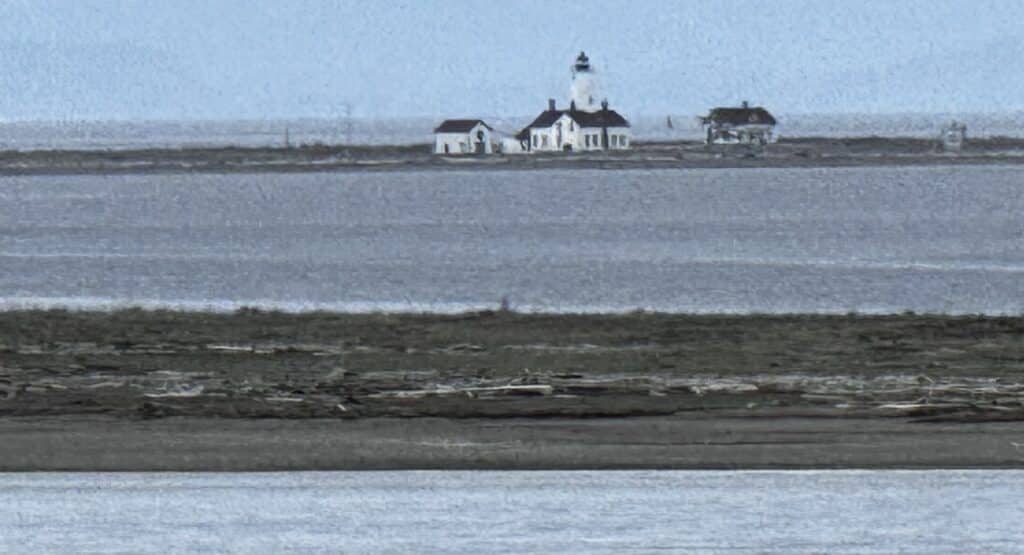
The Dungeness Lighthouse from a distance. Photo by Mary Williams
The lighthouse was the first U.S. lighthouse completed on the Strait of Juan de Fuca, and has operated continuously since Dec. 14, 1857. It was added to the National Register of Historic Places in 1993.
A fog bell was installed in 1857. It was replaced with a steam fog signal in 1874 because the sound of the bell didn’t carry well in fog. Responsibility for the facility was transferred to the U.S. Coast Guard in 1939. In 1994, responsibility for the lighthouse transferred again, this time to the The New Dungeness Chapter of the United States Light Station Association. They continue to maintain it today.
The lighthouse is open for tours from 9 a.m. to 5 p.m. daily. That’s assuming you can get out to it, of course.
The Olympic Discovery Trail
From 1915 to 1980, the Milwaukee Road operated a rail line carrying passengers and timber from Port Townsend to Port Angeles. Rail cars from Seattle were barged to Port Townsend and then rode the rails to Port Angeles. Passenger service was added in 1914 and discontinued in 1931.
In 1985, track removal began, and in 1988 the Peninsula Trails Coalitions began plans to convert the abandoned railbed into the Olympic Discovery Trail. The trail, which is open to walkers, runners, and bikers, follows the historic rail line.
The entire trail is 135 miles long and is divided into four sections. The West Central Section includes Sequim and Railroad Bridge Park. That segment is 26.1 miles long and reaches a maximum elevation of 250 feet.
Railroad Bridge
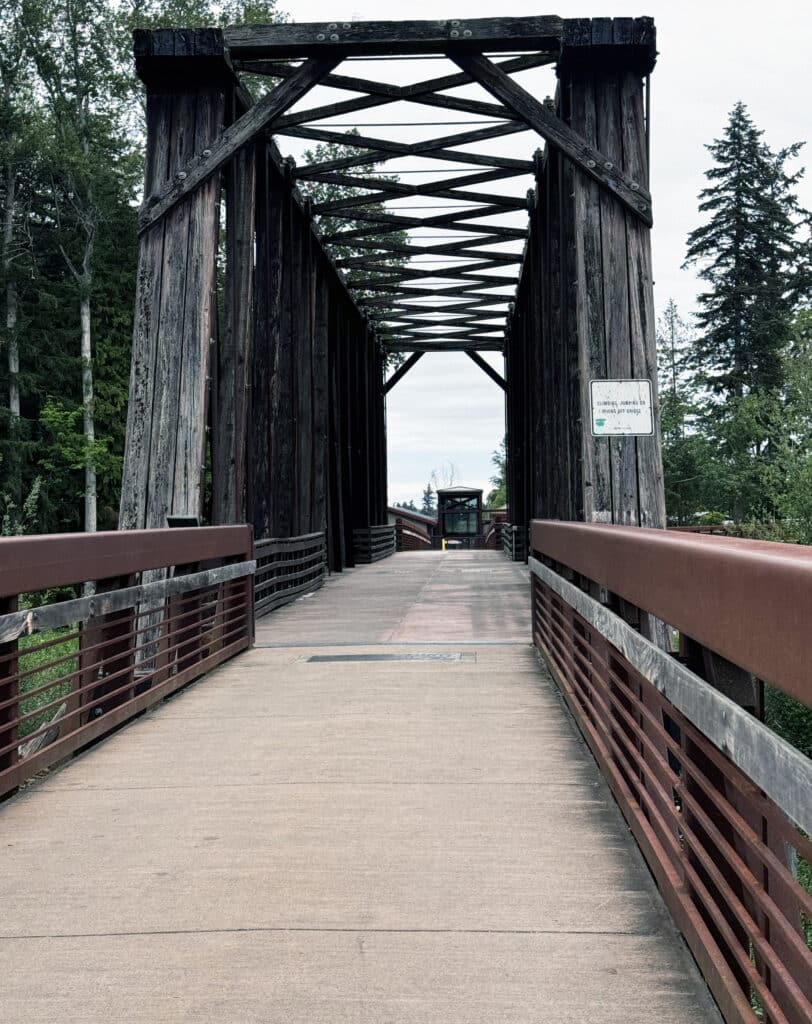
The 75-year-old Dungeness Railroad Bridge. Photo by Mary Williams
In 1990, the 75-year-old Dungeness Railroad Bridge was purchased. It now resides in Railroad Bridge Park directly behind the Dungeness Nature Center. The walk across the bridge is less than a mile. I saw skates, skateboards, and bicycles. Motorized vehicles are prohibited.
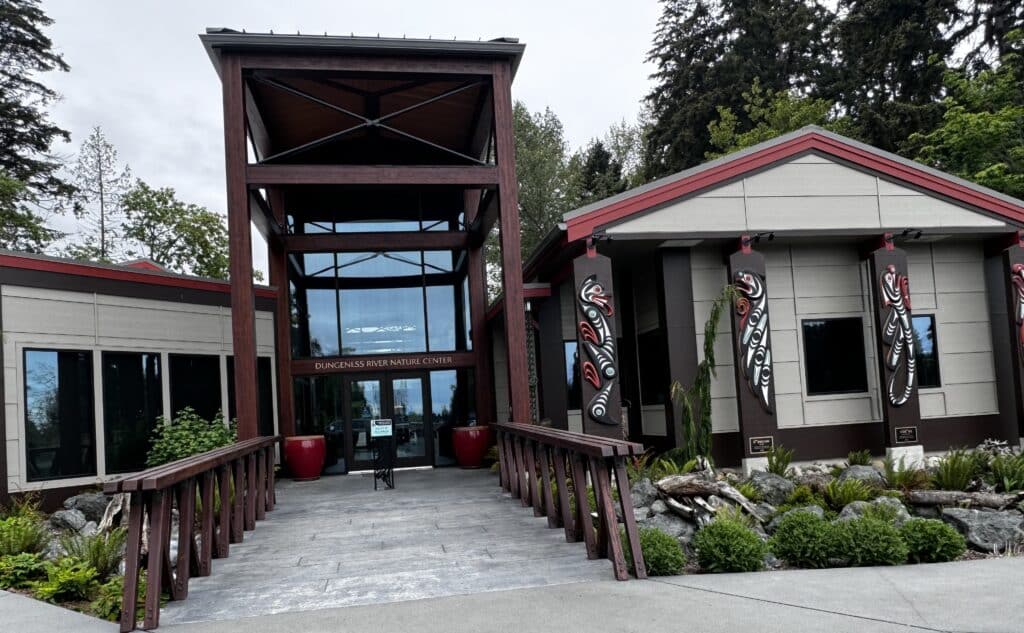
The Dungeness Nature Center in Sequim. Photo by Mary Williams
The Washington State Audubon Society owns the property. The Nature Center contains 500 mounted specimens of regional birds. It includes activities for the entire family and a store. Hours are 10 a.m. to 5 p.m. Monday through Saturday and noon to 5 p.m. Sunday.
About the Day Tripper column
Gas prices are sky high, and a night in a hotel is approaching astronomically expensive. So, for the foreseeable future, I imagine many of you are going to find yourselves taking day trips rather than the road trip vacations we’ve grown to love.
This beautiful region in which we live is ripe with opportunities to explore new places, see new things, and learn a little something at the same time. I promise to keep the longest journeys to a one-way distance of under 200 miles. Whether you want to make it an overnight trip, a weekend, or just a very long day trip, we should be able to pull it off.
I hope you’ll grant me the honor of your virtual company as we travel these roads together. Happy trails!

